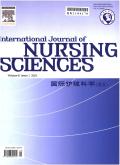撒哈拉以南非洲留住护士:一项系统回顾和荟萃分析
IF 3.1
3区 医学
Q1 NURSING
引用次数: 0
摘要
本研究旨在确定撒哈拉以南非洲(SSA)护士保留的现状,评估SSA国家用于保留护士的策略和干预措施,并确定阻碍护士保留的主要挑战。方法进行系统评价和荟萃分析。在2024年8月对多个数据库进行了电子检索,包括PubMed、Ovid Medline、Embase、CINAHL、Scopus和灰色文献来源。使用covid - ence对研究进行筛选,并使用混合方法评估工具进行质量评估。结果共纳入31篇文献。meta分析显示,SSA的合并护士保留率为53% (95% CI: 38% - 67%;I2 = 97%),而总体工作意愿(ITS)率为57% (95% CI: 43% - 71%;I2 = 99%)。按区域进行的亚组分析显示,ITS率在东非最高(65%),其次是西非(63%),南部非洲最低(35%)。有效的留住策略包括财政和非财政激励、增加护士的生产和培训、引导学生进入短缺的专业、充足的农村住房、设施水平的改善、职业和专业发展机会的可用性、护士的认可和参与、就业条件、人力资源的透明度和可预测管理、支持性工作环境、领导力、宗教因素以及利益相关者的合作。留住护士的主要挑战包括医疗资金不足、治理问题、薪酬和工作条件差、政治干预、高失业率、流动性管理无效、不受管制的国际移民以及富裕国家积极招聘。结论SSA的护士滞留率极低。干预措施应制定上述有效的改进策略,以解决这些系统性挑战,以保留护士在SSA。本文章由计算机程序翻译,如有差异,请以英文原文为准。
Retaining nurses in Sub-Saharan Africa: A systematic review and meta-analysis
Objectives
This study aimed to determine the current prevalence of nurse retention in Sub-Saharan Africa (SSA), evaluate the strategies and interventions in SSA countries used to retain their nurses, and identify the key challenges impeding nurse retention.
Methods
A systematic review and meta-analysis were conducted. An electronic search was performed in August 2024 across multiple databases, including PubMed, Ovid Medline, Embase, CINAHL, Scopus, and grey literature sources. The studies were screened using Covidence, and quality assessments were conducted using the Mixed Methods Appraisal Tool.
Results
A total of 31 articles were included in the review. Meta-analysis revealed that the pooled nurses’ retention rate in SSA was 53 % (95 %CI: 38 %–67 %; I2 = 97 %), while the pooled intention to stay (ITS) rate at work was 57 % (95 %CI: 43 %–71 %; I2 = 99 %). Subgroup analysis by region showed that the ITS rate was highest in East Africa (65 %), followed by West Africa (63 %), and lowest in Southern Africa (35 %). Effective retention strategies included financial and non-financial incentives, increased production and training of nurses, steering students to shortage specialties, adequate rural housing, facility level improvements, availability of career and professional progression opportunities, nurses’ recognition and involvement, employment terms, transparency and predictable management of human resources, supportive work environments, leadership, religious factors, and stakeholders’ collaborations. Key challenges to nurses’ retention include inadequate healthcare funding, governance issues, poor remuneration and working conditions, political interference, high unemployment rates, ineffective mobility management, unregulated international migration, and active recruitment by wealthier nations.
Conclusions
Nurse retention in SSA remains critically low. Interventions should be formulated for the above-mentioned effective improvement strategies to address these systemic challenges in order to retain nurses in SSA.
求助全文
通过发布文献求助,成功后即可免费获取论文全文。
去求助
来源期刊

International Journal of Nursing Sciences
Nursing-Nursing (all)
CiteScore
6.10
自引率
2.60%
发文量
408
审稿时长
25 days
期刊介绍:
This journal aims to promote excellence in nursing and health care through the dissemination of the latest, evidence-based, peer-reviewed clinical information and original research, providing an international platform for exchanging knowledge, research findings and nursing practice experience. This journal covers a wide range of nursing topics such as advanced nursing practice, bio-psychosocial issues related to health, cultural perspectives, lifestyle change as a component of health promotion, chronic disease, including end-of-life care, family care giving. IJNSS publishes four issues per year in Jan/Apr/Jul/Oct. IJNSS intended readership includes practicing nurses in all spheres and at all levels who are committed to advancing practice and professional development on the basis of new knowledge and evidence; managers and senior members of the nursing; nurse educators and nursing students etc. IJNSS seeks to enrich insight into clinical need and the implications for nursing intervention and models of service delivery. Contributions are welcomed from other health professions on issues that have a direct impact on nursing practice.
 求助内容:
求助内容: 应助结果提醒方式:
应助结果提醒方式:


